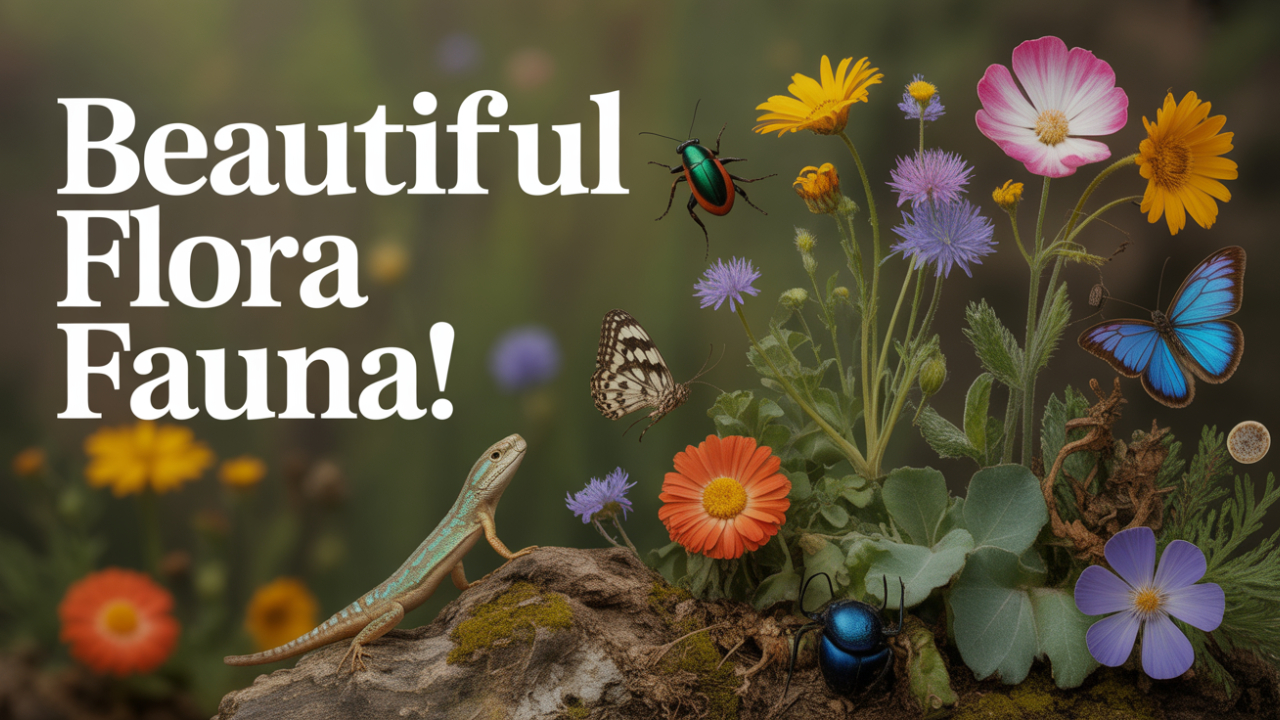Exploring the Flora and Fauna of Pench National Park: What You Should Know

Strong 8k brings an ultra-HD IPTV experience to your living room and your pocket.
Pench National Park, nestled in the heart of India, is a paradise for nature lovers, wildlife photographers, and adventure seekers. Known for its rich biodiversity, this park is home to a wide variety of plant and animal species. If you’ve ever been curious about the flora and fauna of Pench, this guide will walk you through everything you need to know before your visit.
Whether you're planning a Pench wildlife safari or just want to learn more about this beautiful region, understanding the ecosystem of Pench will enrich your experience. From majestic tigers to rare trees, the natural world of Pench is both stunning and vital.
What Makes Pench National Park Unique?
Pench National Park is part of the larger Pench Tiger Reserve, named after the Pench River that flows through it. The park is divided between Seoni and Chhindwara districts in Madhya Pradesh and covers over 750 square kilometers including the core and buffer zones.
It is one of the most important tiger reserves in India and also forms a part of the Satpura-Maikal forest belt, which is known for its rich wildlife and diverse plant life.
Location Advantage
Its central location makes Pench a convenient destination for travelers from Nagpur, Jabalpur, and other parts of central India. The park’s terrain includes hills, valleys, grasslands, and riverine belts, creating an ideal habitat for both the flora and fauna to flourish.
Understanding the Flora of Pench National Park
The flora of Pench is as diverse and enchanting as its fauna. The park lies in a tropical dry deciduous forest zone, which means it goes through both dry and green seasons. The vegetation here provides shelter and food for a wide range of animals and birds.
Common Tree Species
Pench is dominated by Teak (Tectona grandis), which makes up nearly 60% of the tree cover. These tall and sturdy trees are known for their commercial value and provide excellent shade to the jungle floor. Other common trees include:
- Mahua (Madhuca indica) – Known for its sweet flowers and traditional uses
- Tendu (Diospyros melanoxylon) – Leaves are used for making traditional Indian cigarettes (bidis)
- Bija (Pterocarpus marsupium) – Valued for its medicinal properties
- Palash (Butea monosperma) – Adds vibrant orange-red colors during spring
Shrubs and Grasses
The understory vegetation is equally rich, consisting of shrubs, herbs, and grasses. These include:
- Lantana camara – Though invasive, it adds color to the landscape
- Mundi (Sphaeranthus indicus) – Used in traditional herbal medicine
- Various types of bamboo and grasses, important for herbivores in the park
Exploring the Fauna of Pench National Park
The fauna of Pench is what draws most visitors here. The park is famous for its tiger population, but there's so much more to discover.
Major Mammals in Pench
Pench is a vital part of the Pench Tiger Reserve, and spotting a Royal Bengal Tiger in its natural habitat is a dream for many visitors. The park also shelters:
- Leopards – Shy and solitary, often seen resting in trees
- Indian Bison (Gaur) – The largest bovine in India
- Sloth Bears – Known for their shaggy coats and long claws
- Jungle Cats and Indian Civets – Small carnivores adding to the diversity
- Wild Dogs (Dholes) – Highly social predators that hunt in packs
- Jackals, Hyenas, and Foxes – Completing the carnivore chain
Herbivores of Pench
These animals form the prey base for predators and are a crucial part of the Pench jungle ecosystem:
- Spotted Deer (Chital) – Commonly seen in herds across open areas
- Sambar Deer – India’s largest deer species
- Nilgai (Blue Bull) – Often seen near water sources
- Wild Boar and Barking Deer – Active in both forest and grassland
Reptiles and Amphibians
The park is also home to a variety of reptiles like:
- Indian Rock Python
- Cobra and Krait
- Monitor Lizards
- Various species of frogs and toads during the monsoon season
Avian Life: Birds of Pench National Park
If you’re a bird lover, Pench won’t disappoint. With over 285 species of birds, including resident and migratory types, the park is a birdwatcher’s paradise.
Common Birds in Pench
- Indian Roller – The state bird of Madhya Pradesh
- Crested Serpent Eagle
- Peafowl (Peacocks) – Often seen dancing during the monsoon
- Malabar Pied Hornbill
- Kingfishers, Drongos, and Woodpeckers
During winter, you might spot migratory birds like:
- Bar-headed Geese
- Ruddy Shelducks
- Northern Pintails
Seasonal Changes and Wildlife Sightings
Best Time to Visit Pench National Park
The best time to visit Pench depends on what you want to experience. Here’s a seasonal breakdown:
- October to February – Ideal for exploring the flora and fauna of Pench, especially lush greenery and migratory birds.
- March to June – Best time for spotting animals as they gather around water sources.
- July to September – The park remains closed during the monsoon but is great for plant regeneration and water recharge.
Eco-System and Conservation Efforts
A Balanced Natural Habitat
The success of Pench’s ecosystem lies in its biodiversity and balanced food chain. Herbivores like deer and antelopes feed on the vegetation, while carnivores maintain the population balance by preying on them. Birds, insects, reptiles, and even microorganisms all play an essential role in this web of life.
Protection and Community Involvement
Thanks to various government and NGO-led conservation efforts, Pench has seen a positive rise in its tiger population. Local communities are also actively involved in preserving the flora and fauna of Pench, often working as naturalists, forest guides, and eco-tourism facilitators.
Tips for Wildlife Lovers Visiting Pench
Safari Planning
- Book your safaris in advance through official portals.
- Opt for early morning or late evening slots for the best chances of animal sightings.
- Choose a knowledgeable guide who can help you understand the Pench forest animals and plant life.
What to Pack
- Light-colored clothing for safaris
- Binoculars and a camera
- Sunscreen and insect repellent
- Field guides on Indian birds and mammals
Why Pench Stands Out
Pench stands out among India’s tiger reserves because of its diverse landscapes, ease of access, and a good mix of flora and fauna. It offers both peaceful nature experiences and thrilling wildlife encounters.
The wildlife in Pench National Park is not just about seeing a tiger; it’s about appreciating the harmony between plants, animals, and humans that has existed for centuries.
For travelers looking for a comfortable stay close to nature, some of the best resorts in Pench offer luxurious jungle experiences that blend well with conservation and eco-tourism values.
Conclusion: Witness the Wild Beauty of Pench
Exploring the flora and fauna of Pench is more than just a jungle safari—it’s an educational and emotional journey. From towering teak forests to the majestic tiger, from the smallest herbs to rare birds, Pench showcases India’s natural wealth in its purest form.
If you're seeking a memorable experience filled with nature, knowledge, and excitement, Pench National Park should be at the top of your list. Respect the forest, observe in silence, and let the wild beauty of Pench change the way you see the natural world.
Note: IndiBlogHub features both user-submitted and editorial content. We do not verify third-party contributions. Read our Disclaimer and Privacy Policyfor details.


